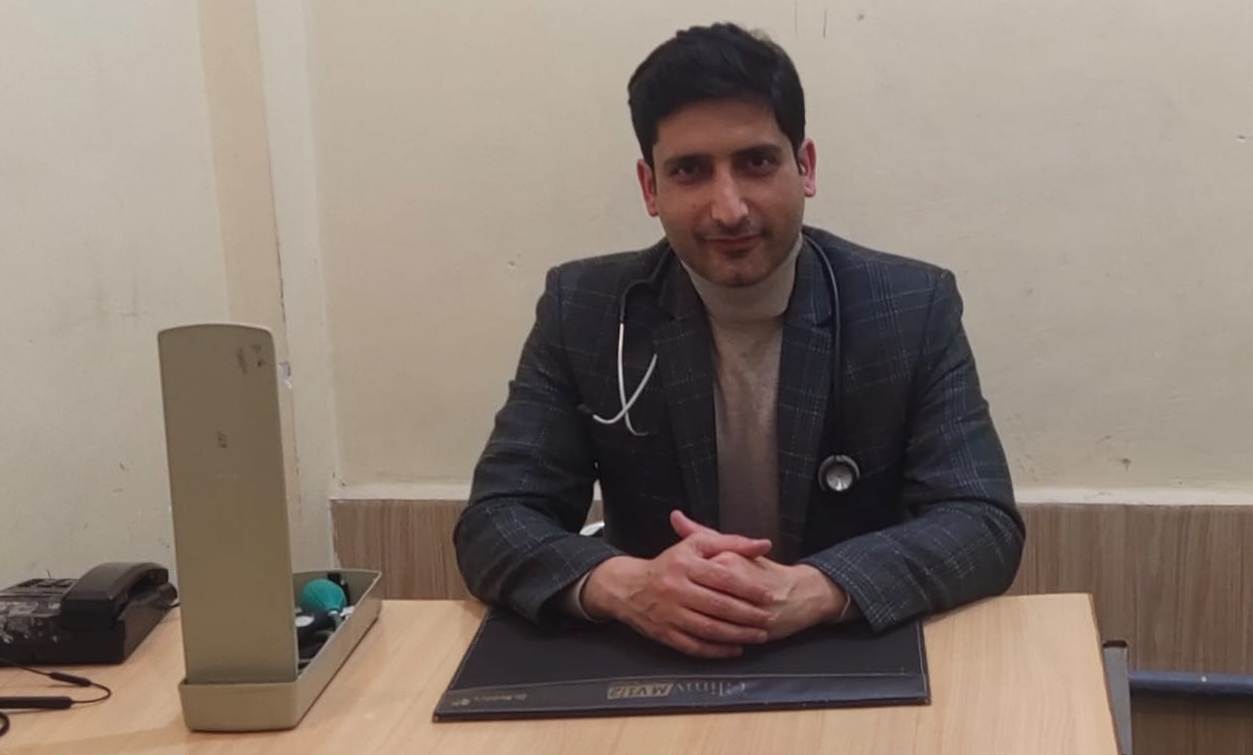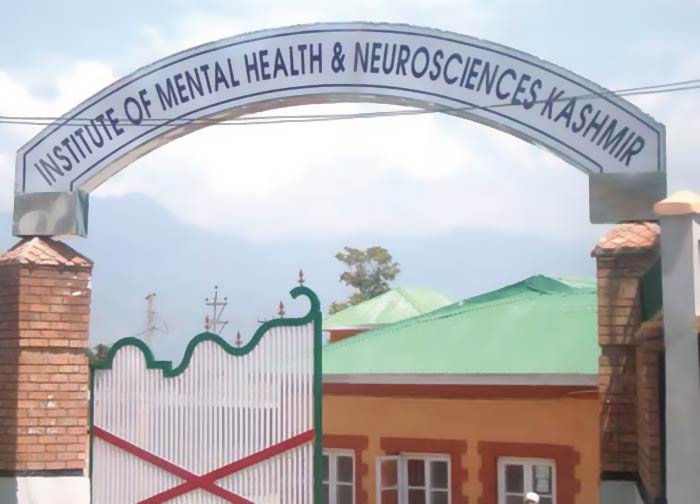Dr Yasir Ahmad Rather, Consultant Psychiatrist and Associate Professor at the Institute of Mental Health and Neurosciences (IMHANS) GMC Srinagar, tell Khalid Bashir Gura about the costs of the drug abuse that Kashmir is paying.

KASHMIR LIFE (KL): Just like deaths due to other diseases are categorized why not due to drug addiction? Is drug addiction a reason behind sudden deaths in youth?
DR YASIR A RATHER (YAR): Kashmir is witnessing sudden deaths, some state heart attacks as a reason and some attribute it to unknown causes. This is very true that many deaths are occurring due to drug overdose. These deaths are not being categorised because families attribute them to heart attacks or some other illnesses. These reasons are projections of some very strongly reinforced belief systems in our society.
When we hear about drug addiction or get to know someone who is suffering from drug abuse, the first feeling we get is anger, a feeling of spoiled children, something lacking empathy unlike cancer, or heart disease. So the categorisation doesn’t happen because we are not ready to accept drug addiction as an illness. It has been scientifically proven how drug addiction is an illness rather than an ill-formed habit. This disapproval to accept it as illness makes it more stigmatised.
There is a collective psycho-social construct in Kashmir where we have been taught to repress, to cover up ills, mistaking that to talk about it may make it more prevalent. This has been taught to Kashmiris for generations. As drug addiction is attributed to a social evil so this psycho-social construct automatically applies here as well, which in turn pushes everyone to not accept the prevalence and consequences of drug abuse just to prevent it. That is just a myth. Also, Kashmir is a very closely-knit society, everyone is involved in everyone’s life, and there has been a notion of over advising as a form of social responsibility towards the groups you are part of. As drug addiction is tabooed so whenever someone gets to know about people who use drugs, there is an over-involvement of critical comments in order to rectify the behaviour, but illnesses don’t heal with comments and advise, it needs appropriate treatment. So this notion unconsciously leads to covering up the fact of deaths due to overdose. If we see, here no one is to blame. When such constructs exist how you expect anyone to share their familial stories of drug abuse. Someone lost his child due to overdose and in that traumatic situation how can we expect the person to face up to the fact and people around.
This needs collective attention rather than collective criticism.
KL: What are the consequences of drug abuse, apart from deaths due to overdose?
YAR: Drug use can have a wide range of short and long term, direct and indirect effects. These effects often depend on the specific drug or drugs used: how they are taken? how much is consumed? the status of the user’s health, and other factors. Short-term effects can range from changes in appetite, wakefulness, heart rate, blood pressure, and/or mood to heart attack, stroke, psychosis, overdose, and even death. These health effects may occur after just one use. Long-term effects can include heart or lung disease, mental illness, HIV/AIDS, hepatitis C or B, and others.
Drug use can change how certain brain circuit’s work. These brain changes interfere with how people experience normal pleasures in life such as food and sex, their ability to control their stress level, their decision-making, their ability to learn and remember, etc. These changes make it much more difficult for someone to stop taking the drug even when it’s having negative effects on their life and they want to quit.
Drug use can also have indirect effects on both the people who are taking drugs and on those around them. This can include affecting a person’s nutrition; sleep; decision-making and impulsivity; and risk for trauma, violence, injury, and communicable diseases.

KL: What leads to drug abuse? Is peer pressure one of the factors or the only factor? How important is choosing a friend circle?
YAR: There are many factors leading to drug abuse but indeed peer role is a prime factor in a majority of the cases. Now if we say it’s because of peer pressure, let’s be selective in choosing friends or let’s not allow children to mingle up with friends. But is it practically possible? Children make friends instinctually, there are no set rules for friendship, and they just evolve in friendship. So technically friendship cannot be restrained. What’s important is teaching children adequate life skills, creating awareness about right and wrong, imparting skills of assertiveness and working on being more expressive.
KL: How important is parenting and family role?
YAR: The family has an important role to play as well. It’s like one of the pillars that makes the foundation stronger. Parents need to create a more expressive environment at home, where children are positively reinforced for being honest. Children are prompted to speak about their daily routines, the day at school, friends, what do they like about their friends? Also keenly observe their children in order to know if there is some change in their behaviours which can be an indication of drug abuse.
KL: What kind of people end up getting into drug addiction? Is it just a specific age-group class, area?
YAR: Initially there were typical stereotypes in regard to people who use drugs, like there were notions that particular socioeconomic status, unemployment, broken families witness trends of drug abuse but now since the past some years there is a change in the pattern, drug addiction is occurring across all sections of the society be it upper, middle or lower class, be it employed, unemployed or students- there is no bar for it now.
KL: What role do you expect society, media, police and Imams to play?
YAR: Well everyone has a role to play to deal with drug addiction. One major area of contribution is appropriate awareness that can be easily done by these agencies. Some attribute drug abuse to weakness in Imaan, some call it a seed of bad parenting, some may just criminalise it but collectively people need to promote the real narrative i.e. drug addiction is a medical illness and needs to be treated like one.
KL: Has heroin addiction increased in Kashmir? How much is the surge and since when? How dangerous is it?
YAR: There has been a surge in heroin addiction in Kashmir, the situation is alarming. The trend of heroin has become prevalent for the past few years now. Around 90 per cent of cases seeking treatment in our hospital are related to heroin.
Heroin addiction can have serious implications – from deaths due to overdose to infections like HIV / hepatitis C or B, because of needle sharing; these are some serious life-threatening problems.
KL: Crimes like murders, thefts increasing in our society? Are some of them are due to drug addiction?
YAR: Crimes are increasing in our society. This is worrisome because Kashmir was considered a place of warmth, love, close connections and a safe place. Crimes like murders and thefts are happening in broad daylight leaving everyone puzzled. What changed? This may not be the first thing that crosses someone’s mind because it’s like the slow poison which doesn’t have an apparent effect but slowly causes a detrimental effect on us – it’s the conflict. Kashmir has been witnessing since ages which somewhere everyone has accepted but that doesn’t mean it ceases to exist. Conflict causes trauma whether direct or indirect, whether expressed or unexpressed, it disturbs the stability of the human mind which eventually lowers the threshold and can lead to impulsivity, poor decision making, less sensitivity to the pain of others, insecurity, irritability, passive aggression and immediate gratification instead of patience. These characteristics have behavioural manifestations that can be deviant in nature.
Drug addiction can be a contributing factor as it increases the impulsivity in a person and impairs decision making, adding to the already existing pile of the lowered threshold.
Not just thefts and murders, but domestic abuse, physical abuse, road rage and fights over trivial issues are occurring at a higher pace. As a society, we have become so used to pain, trauma and violence that we have forgotten how to live a healthy life, how to work on our overall development. The target is survival and trying to fix the odds of life. A balanced approach is to work on both aspects, enjoy life with the positives and work against the negatives, but this isn’t happening. There is a huge gap between the two, which also pushes for deviant behaviours and leads youth towards drug abuse.
Researches indicate an association between violence and mental illness. However, the violence that can be attributed to people who suffer from mental disorders is no more than 10 per cent, while the risk those people have of suffering violence is greater than the risk of them inflicting it.
KL: We see frequent reports of suicides by teenagers and adults. Why so?
YAR: Suicidal behaviours and self-harm behaviours are very commonly seen in teenagers and early adults. There is an “epigenetic explanation” to this as well. People say nowadays teenagers are impatient. The question is why? Kashmir is witnessing trauma since past generations and trauma can leave a chemical mark on a person’s genes, which then is passed down to subsequent generations. It lowers the threshold of bearing in future generations and increases the vulnerability of mental health issues. Suicidal behaviour and self-harm behaviours occur due to underlying mental health issues like depression or some personality disorders, which are directly correlated to conflict. Also, there is an increase in child sexual abuse in our society which also can lead to the development of suicidal behaviour, impulsivity, self-harm and depressive features in teenagers. So directly as well as indirectly trauma has played its role in such behaviours.
KL: The number of people who use drugs is increasing in Kashmir. Do you believe the police is doing their job effectively?
YAR: See drug abuse is not a problem that exists in a swimming pool where you know the limited water, space, the depth. The fact is that it’s a river where we don’t know which turn it will take next. Police are definitely giving efforts to controlling the menace but it’s not a one day job, it’s not a defined job, it’s pretty huge.
A collective community effort is required to bring drug addiction under control.















